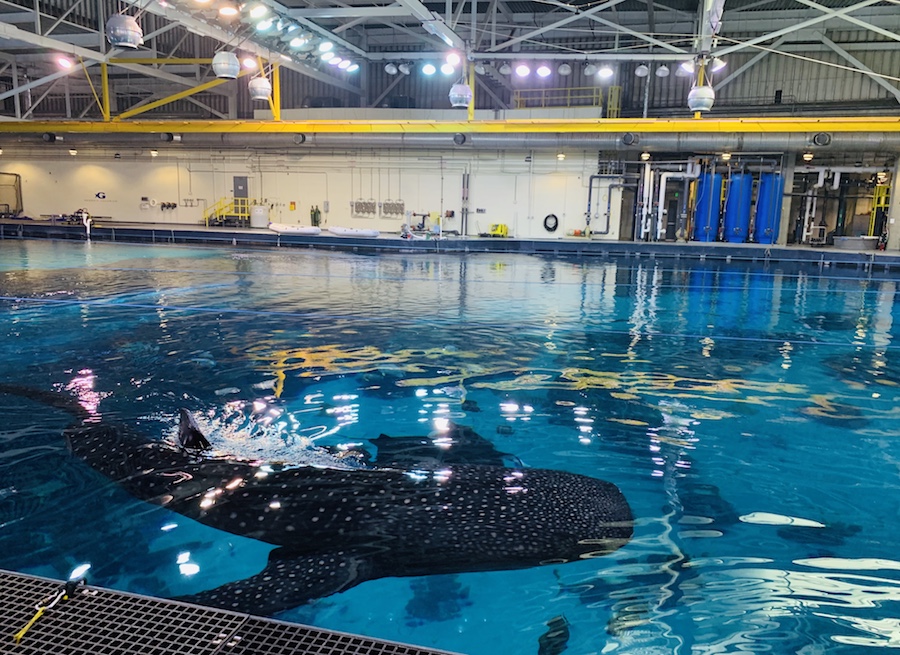
This is one of my absolute favorite animals on the planet (my favorite is going to be next week’s blog post)! I hold this graceful swimmer near and dear to my heart because I had the amazing experience of seeing a whale shark in person. I had the pleasure of visiting the Georgia Aquarium, previously mentioned in the Manta Ray blog post. I was so excited about going that my mom decided to get me, her, and my sister an exclusive pass to the aquarium. This pass allowed us to go above the biggest tank that holds their whale sharks to where they feed them from alongside other exclusive areas and experiences. So I was able to get up close and personal with this beautiful behemoth and it was an experience of a lifetime; I highly recommend! Enough about me though, let’s get to the fun fact about Whale Sharks!

Starting it off, I’ll clear up a little confusion most people have about whale sharks: They are not a whale but rather a shark. They got their name due to the way they feed and their size, which are both similar to a whale’s. Whales and whale sharks are both filter feeders, which means they basically filter out small organisms out of the water such as plankton and krill and consume them. There are other types of sharks that also filter feed but what makes the difference between sharks and whales is that sharks are classified as fish, while whales are classified as mammals. This classification means that whales sharks are the biggest fish in the ocean! They are about as long as a school bus and can weigh around 30 tons. Thats one big fish! Similar to giant manta rays (the focus of a previous blog post), whale sharks have unique markings on their backs that can be used to identify the whale shark.

Continuing on, whale sharks are actually unlike most other fish in the fact that they are ovoviviparous. This basically means that they give birth to live young. Again, this is another similarity that makes them similar to whales so it is quite obvious how they got their name! Unfortunately the newborn whale sharks often don’t make it to adulthood. Only about 10% of all whale sharks are able to make it to adulthood. If a whale shark defies these odds and sees itself growing old, they can survive for 70-100 years! The births of new whale sharks are actually quite mysterious; nobody knows where they give birth. It is speculated that they travel to some very remote areas to have their babies so they can escape certain predators. One last fact about whale sharks is that they are classified as endangered. There is a silver lining though; In some areas, whale shark numbers are increasing! Hopefully those areas will start to expand and eventually the entire ocean can see increasing numbers of these gentle giants!

I always find it interesting how you experienced some of these creatures in person but this one was one of my favorites! I always thought the whale shark was actually a type of whale and not shark haha, so it’s nice having clarification. I also like how they are private with their births but the babies have a low chance of surviving. Its always sad to see a species become endangered because everyone deserves a chance of life. But to know that in some areas the numbers are growing is nice to hear and left me with a smile. Good work!